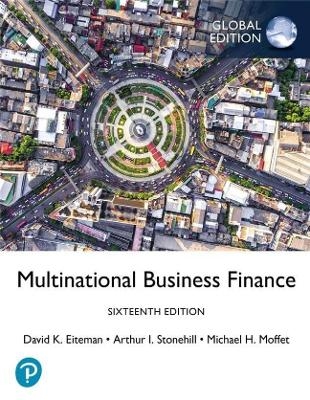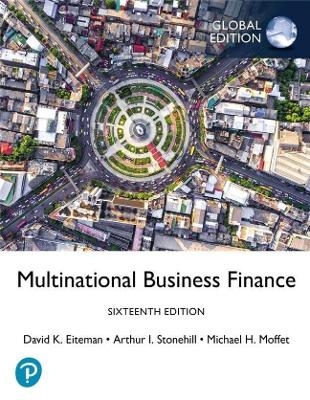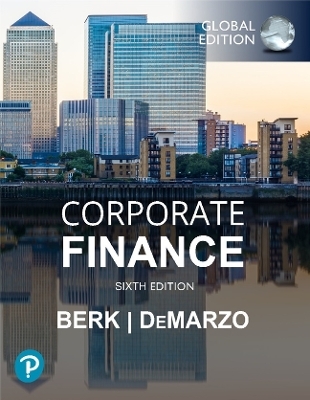
Fundamentals of Islamic Money and Capital Markets
John Wiley & Sons Inc (Hersteller)
978-1-119-19896-3 (ISBN)
- Keine Verlagsinformationen verfügbar
- Artikel merken
Based on the course taught at the International Islamic University Malaysia, this is the first book on Islamic finance to focus exclusively on money and capital markets. Covering basic concepts as well as current practices in Islamic financial markets, the book features case studies from real markets. It outlines the theory of money in terms of value, supply, and demand, while explaining the Islamic capital markets in terms of classifications, types of operations, valuations of securities, Islamic unit trust, ETFs, Islamic stock broking, and much more.
Written by experts from the International Islamic University Malaysia, the leading organisation in research in Islamic finance
The first guide to Islamic finance focused solely on money and capital markets
An excellent introduction to money market principles for students in Islamic banking and finance, as well as researchers and current practitioners, Fundamentals of Islamic Money and Capital Markets is a vital resource on the subject.
Mohd Azmi Omar, PhD, is the Director General of the Islamic Research & Training Institute (IRTI), Islamic Development Bank. He was formerly the Deputy Rector (Deputy Vice–Chancellor) in charge of academics and research at the International Islamic University Malaysia (IIUM). He obtained his bachelor′s and master′s degrees in finance from Northern Illinois University, USA, and his PhD from Bangor University, United Kingdom. Muhamad Abduh is the Head of Research of IIUM′s International Institute of Islamic Business and Finance (IIiBF) and the editor–in–chief of its official journal, the Journal of Islamic Finance. Dr. Raditya Sukmana is an Assistant Professor in the Department of Islamic Economics, Airlangga University, Surabaya, Indonesia. He obtained his BA in finance from Airlangga University; an MS in economics from Georgia State University, USA; and a PhD in Islamic finance from International Islamic University Malaysia in 2010.
Preface xiii
Acknowledgments xv
1 An Introduction to Conventional and Islamic Financial Systems 1
Learning Outcomes 1
Introduction 2
The Roles and Functions of Financial Markets 4
Structures of Financial Markets 6
Based on the Instrument 6
Based on the Issuance of Securities 8
Methods Used in Secondary Markets 8
Based on the Maturity 9
Classification of Financial Markets 9
The Money Market 10
The Capital Market 12
Types of Financial Intermediaries 13
Depository Institutions 14
Contractual Institutions 15
Investments and Finance Institutions 17
A Brief Overview of the Islamic Financial System 17
Evolution of Islamic Finance 18
Chapter Summary 20
Chapter Questions 21
Notes 22
References 22
2 Development of Islamic Capital and Money Markets in Malaysia 23
Learning Outcomes 23
Introduction 24
Development of Islamic Financial Institutions in Malaysia 24
1960 to 1990: Establishment of Islamic Financial Institutions 24
1990 to 2000: Conventional Banks Allowed to Offer Islamic
Financial Products and Services 26
2000 to 2010: Islamic Subsidiaries and the International Integration of the Islamic Banking System 27
Islamic Capital Markets in Malaysia 29
Sukuk 30
Islamic Collective Investments 31
Islamic Stock Broking 32
Malaysia International Islamic Financial Centre (MIFC) 33
Chapter Summary 34
Chapter Questions 36
Notes 36
References 36
3 Regulators and Transactions Platform for Capital and Money Markets 37
Learning Outcomes 37
Introduction 38
Bank Negara Malaysia (BNM) 38
Role and Functions 39
BNM Administered Legislation 40
Role of BNM on ICM Development 42
The Securities Commission (SC) 42
Role of SC on ICM Development 42
Bursa Malaysia (BM) 45
Role of BM on ICM Development 45
Shariah–Compliant Stocks and ETF 46
Islamic Equity Indices 46
Islamic REITs and Sukuk Market 47
Chapter Summary 47
Chapter Questions 48
Notes 48
References 48
Websites 48
4 Islamic Money Market 49
Learning Outcomes 49
Introduction 50
Money Market Participants 50
Functions of the Islamic Money Market 51
Differences between Islamic and Conventional Money Markets 52
Components of the Malaysian Islamic Money Market 53
Islamic Interbank Market 53
Mudarabah Interbank Investment 54
Profit Calculation for Mudarabah Interbank Investment 55
Example: Mudarabah Interbank Investment (MII) 56
Commodity Murabahah 56
Example: Commodity Murabahah Interbank Investment 58
Wakalah Investment 58
Trading of Islamic Money Market Instruments 59
Government Investment Issue (GII) 60
Example: Calculation of GII price 61
Malaysian Islamic Treasury Bills (MITB) 61
Example: Calculation of Proceeds on MITB 62
Bank Negara Monetary Notes (BNMN) 62
Sukuk Bank Negara Malaysia Ijarah (SBNMI) 63
Islamic Negotiable Instruments (INI) 63
Negotiable Islamic Debt Certificate (NIDC) 63
Example: Calculation of Price of NIDC of Less Than One Year 64
Example: Calculation of Price NIDC with Maturity of More Than One Year 65
Islamic Negotiable Instruments of Deposit (INID) 66
Example: Calculation of Proceeds for an INID 66
Islamic Accepted Bill (IAB) 67
Import and Local Purchases 67
Export/ Local Trade 67
Example: Price Calculation of IAB under Bai al–Dayn 68
Sell and Buy Back Agreement (SBBA) 68
Example: Sell and Buy Back Agreement 69
Cagamas Sukuk 70
Sanadat Mudarabah Cagamas (SMC) 70
Example: Sanadat Mudarabah Cagamas (SMC) Calculation 71
Sanadat Cagamas 71
Islamic Corporate Sukuk 72
Chapter Summary 72
Chapter Questions 73
Notes 73
References 74
5 An Overview of Sukuk 77
Learning Outcomes 77
Introduction 78
Comparing Sukuk, Bonds, and Shares 79
Sukuk Types 81
Sukuk Structures 81
Sukuk al–Ijarah 82
Sukuk al–Musharakah 88
Sukuk al–Mudarabah 94
Sukuk al–Salam 99
Sukuk al–Istisna 102
Sukuk al–Murabahah 106
Sukuk al–Istithmar 110
Sukuk al–Wakala 114
Chapter Summary 117
Chapter Questions 118
Notes 118
References 119
6 Shariah–Compliant Equity 121
Learning Outcomes 121
Introduction 122
The Structure of Equity Markets 124
Shariah–Compliant Equity Securities 125
Differences between Shariah and Non–Shariah–Compliant Equity Markets 128
Shariah–Compliant Stocks Screening 130
Malaysia Securities Commission 130
S&P Shariah Indices 131
Pakistan Meezan Islamic Fund 133
Global GCC Islamic Fund Screening 134
Jakarta Islamic Index 135
Chapter Summary 136
Chapter Questions 136
Note 136
References 136
7 Islamic Mutual Funds 139
Learning Outcomes 139
Introduction 140
Closed and Open–Ended Funds 140
Conventional Mutual Funds 141
Active and Passive Management 143
Advantages of Mutual Funds 143
Disadvantages of Mutual Funds 144
Fees and Expenses 145
Islamic Mutual Funds 146
Basic Concept of Islamic Mutual Funds 147
Shariah Stock Screening 147
Purification of Income 148
Types of Islamic Mutual Funds 149
The Role of the Shariah Advisory Board in Islamic Mutual Funds 151
Calculating NAV in the Islamic Mutual Funds 151
Organisation of Islamic Mutual Funds 153
The Process of Investing in Islamic Mutual Funds 154
Islamic Ethical Investment and Ethical Investment 156
Chapter Questions 158
Notes 158
References 158
8 Islamic Real Estate Investment Trusts (I–REITs) 161
Learning Outcomes 161
Introduction 162
Islamic Real Estate Investment Trusts (I–REITs) 165
Shariah–Permissible Investments for I–REITs 166
I–REITs Structure 169
Case Study: Al–’Aqar KPJ REIT 171
Case Study: Al–Hadharah Bousted REIT 174
Difference between Conventional and Islamic REITs 176
Chapter Summary 177
Chapter Questions 178
Notes 178
References 178
9 Islamic Exchange–Traded Funds 179
Learning Outcomes 179
Introduction 180
Open– and Closed–End Funds, and Unit Trust Funds 180
Open–End Funds 180
Closed–End Funds 181
Unit Trust 181
Exchange–Traded Funds (ETFs) 181
Islamic Exchange Trade Funds (I–ETFs) 185
Security Borrowing and Lending in Malaysia 190
Islamic ETFs in Other Countries 195
Challenges in Promoting I–ETFs 195
Chapter Summary 196
Chapter Questions 197
Notes 197
References 197
10 Islamic Derivatives Market 199
Learning Outcomes 199
Introduction 200
Derivative Securities in the Conventional Market 200
Risk Profile 202
Main Players in the Derivative Markets 203
Hedging with a Forward Contract 204
Hedging with Future Contracts 205
Hedging with Swap Contracts 206
Derivative Securities in the Islamic Perspective 211
Islamic Forward and Future Contract 213
Islamic Option Contract 216
Islamic Cross–Currency Swap 218
Islamic Profit Rate Swap 220
Islamic Structured Product 222
Chapter Summary 225
Chapter Questions 226
Notes 226
References 227
Bibliography 229
About the Authors 233
Index 235
| Erscheint lt. Verlag | 27.10.2015 |
|---|---|
| Reihe/Serie | Wiley Finance |
| Verlagsort | New York |
| Sprache | englisch |
| Maße | 150 x 250 mm |
| Gewicht | 666 g |
| Themenwelt | Wirtschaft ► Betriebswirtschaft / Management ► Finanzierung |
| Wirtschaft ► Volkswirtschaftslehre ► Finanzwissenschaft | |
| ISBN-10 | 1-119-19896-8 / 1119198968 |
| ISBN-13 | 978-1-119-19896-3 / 9781119198963 |
| Zustand | Neuware |
| Haben Sie eine Frage zum Produkt? |
aus dem Bereich


